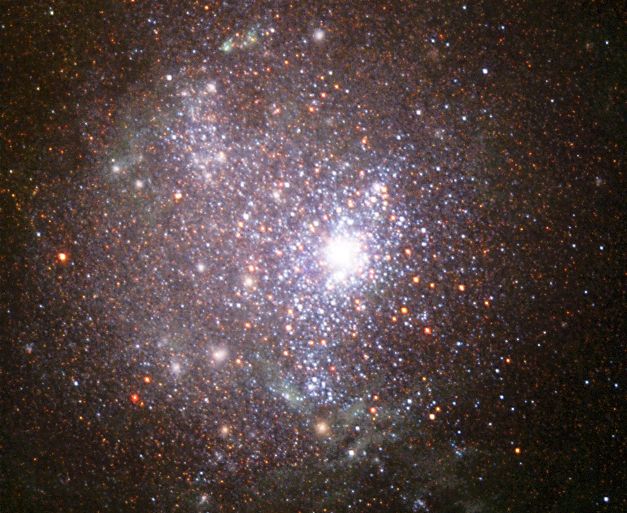The Stars of NGC 1705

Explanation:
Some 2,000 light-years across, NGC 1705 is small as galaxies go,
similar to our Milky Way's own satellite galaxies,
the Magellanic Clouds.
At a much larger distance of 17 million light-years, the
stars
of NGC 1705 are still easily resolved in
this beautiful image
constructed from data taken in 1999 and 2000 with the Hubble Space
Telescope.
Most of the younger,
hot, blue
stars in the galaxy are
seen to be concentrated in a large central star cluster with the
older, cooler,
red stars more evenly distributed.
Possibly 13 billion years old,
NGC 1705 could well have been
forming stars through out its lifetime while light from its most recent
burst of star formation reached Earth only 30 million years ago.
This gradually evolving dwarf irregular galaxy
lacks
organized structures like spiral arms and
is thought to
be a nearby analog to the
first
galaxies to form
in the
early Universe.
Authors & editors:
Robert Nemiroff
(MTU) &
Jerry Bonnell
(USRA)
NASA Web Site Statements, Warnings,
and Disclaimers
NASA Official: Jay Norris.
Specific
rights apply.
A service of:
LHEA at
NASA /
GSFC
& Michigan Tech. U.

